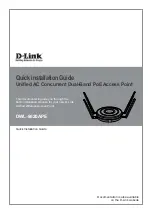
http://www.3jtech.com.tw
http://www.pnpipcameras.com
G2wifi II User’s Manual
Copyright of 3JTech Co., Ltd. (also doing business as A3J Engineering Inc.)
43
3.2.4 QoS
The QoS™ feature helps improve your network gaming performance by prioritizing applications. By
default, the QoS settings are disabled.
3.2.4.1 QoS Setup
Enable QoS:
This option is disabled by default. Enable it for better performance and
experience with online games and other interactive applications, such as VoIP.
Automatic Classification:
This option is enabled by default so that your router will
automatically determine which programs should have network priority.
Dynamic Fragmentation:
This option should be enabled when you have a slow Internet
uplink. It helps to reduce the impact that large low priority network packets can have
on more urgent ones by breaking the large packets into several smaller packets.
Automatic Uplink Speed:
When enabled, this option causes the router to automatically
measure the useful uplink bandwidth each time the WAN interface is re-established (after a
reboot, for example).
Measured Uplink Speed:
This is the uplink speed measured when the WAN interface was
last re-established. The value may be lower than that reported by your ISP as it
does not include all of the network protocol overheads associated with your ISP's
network. Typically, this figure will be between 87% and 91% of the stated uplink speed for xDSL
connections and around 5 kbps lower for cable network connections.
Uplink Speed:
If Automatic Uplink Speed is disabled, this option allows you to set the uplink
speed manually. Uplink speed is the speed at which data can be transferred from the router to
your ISP. This is determined by your ISP. ISPs often specify speed as a downlink/uplink pair;
for example, 1.5Mbits/284Kbits.
For this example, you would enter "284". Alternatively you can test your uplink speed
with a service such as
www.dslreports.com
. Note however that sites such as DSL Reports,
because they do not consider as many network protocol overheads, will generally note
speeds slightly lower than the Measured Uplink Speed or the ISP rated speed.
















































